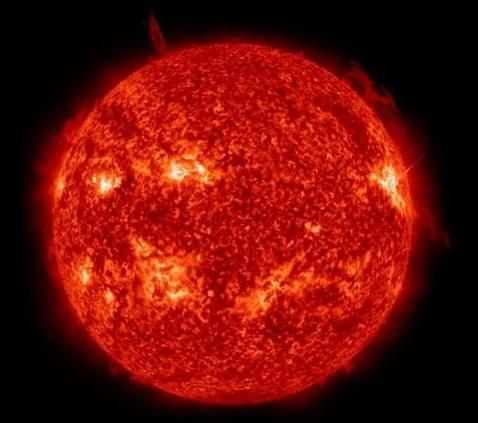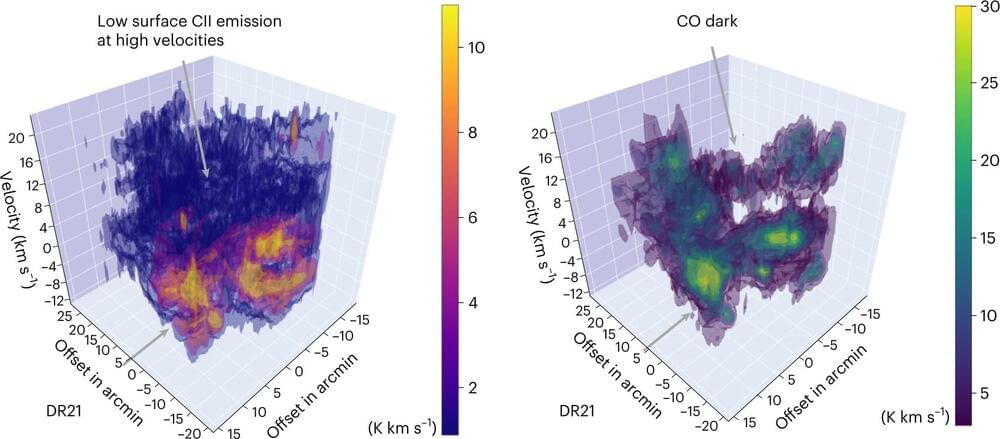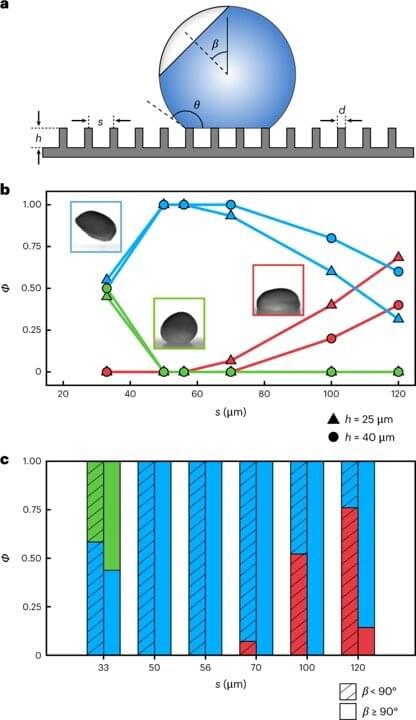Dark energy is the name physicists have given to the mysterious thing driving the universe’s accelerated expansion. It may be a force or a form of energy, and one piece of evidence suggests it is hidden inside black holes.
Category: physics – Page 179
The universe keeps dying and being reborn, claims Nobel Prize winner
Sir Roger Penrose, a mathematician and physicist from the University of Oxford who recently shared this year’s Nobel Prize in physics, says that our universe has undergone numerous Big Bangs, with another one on the way.

Neutron Stars Create ‘Perfect’ Explosion in Space, Forming Senseless Symmetrical Sphere
Two neutron stars collided which caused a huge explosion but with an unusually flawless form, baffling scientists. Usually, a collision between neutron stars would lead to a flattened cloud but the recently observed explosion formed a perfectly spherical shape, SpaceAcademy.org reports.
It is still unclear how this is possible, but a new study may shed light on the fundamental physics involved and help scientists calculate the universe’s age. Astrophysicists from the Universe of Copenhagen discovered the kilonova and described it in full in their study, titled “Spherical Symmetry in the Kilonova At2017gfo/GW170817,” which was published in the journal Nature.
The Planck Temperature: How hot can the Universe get?
The Planck Temperature – Absolute Hot: What is the hottest temperature possible.
Today I’m going to look at the Planck Temperature and it’s about to get very strange. Let’s find out more.
Planck temperature is what we think is the highest temperature possible. It is the temperature at which our understanding of the universe breaks.
In this video we’re going to try to imagine just how hot that is, and what the implications of this value are. In order to do this, we’re going to look at some other very hot things to compare.
Cup of tea image by TerriC
https://pixabay.com/photos/tea-cup-vintage-tea-cup-tea-cup-2107599/
Desert image by photo-graphe.
https://pixabay.com/photos/desert-landscape-sunset-dune-sand-2774945/
LHC tunnel image by Maximilien Brice at CERN, used under creative commons CC 4.0

Scientists observe high-speed star formation
Gas clouds in the Cygnus X Region, a region where stars form, are composed of a dense core of molecular hydrogen (H2) and an atomic shell. These ensembles of clouds interact with each other dynamically in order to quickly form new stars. That is the result of observations conducted by an international team led by scientists at the University of Cologne’s Institute of Astrophysics and at the University of Maryland.
Until now, it was unclear how this process precisely unfolds. The Cygnus X region is a vast luminous cloud of gas and dust approximately 5,000 light years from Earth. Using observations of spectral lines of ionized carbon (CII), the scientists showed that the clouds have formed there over several million years, which is a fast process by astronomical standards. The results of the study, “Ionized carbon as a tracer for the assembly of interstellar clouds,” will appear in the next issue of Nature Astronomy.
The observations were carried out in an international project led by Dr. Nicola Schneider at the University of Cologne and Prof Alexander Tielens at the University of Maryland as part of the FEEDBACK program on board the flying observatory SOFIA (Stratospheric Observatory for Infrared Astronomy). The new findings modify previous perceptions that this specific process of star formation is quasi-static and quite slow. The dynamic formation process now observed would also explain the formation of particularly massive stars.
This Historic Gravitational Wave Discovery Created a Perfectly Spherical Blast
The game-changing neutron star merger of August 2017 created a ‘perfect’ explosion, according to a new study.
The blast behind the historic gravitational wave astronomy discovery of August 2017 had a perfect spherical shape, according to a new study.

Engineers finally peeked inside a deep neural network
Say you have a cutting-edge gadget that can crack any safe in the world—but you haven’t got a clue how it works. What do you do? You could take a much older safe-cracking tool—a trusty crowbar, perhaps. You could use that lever to pry open your gadget, peek at its innards, and try to reverse-engineer it. As it happens, that’s what scientists have just done with mathematics.
Researchers have examined a deep neural network—one type of artificial intelligence, a type that’s notoriously enigmatic on the inside—with a well-worn type of mathematical analysis that physicists and engineers have used for decades. The researchers published their results in the journal PNAS Nexus on January 23. Their results hint their AI is doing many of the same calculations that humans have long done themselves.
The paper’s authors typically use deep neural networks to predict extreme weather events or for other climate applications. While better local forecasts can help people schedule their park dates, predicting the wind and the clouds can also help renewable energy operators plan what to put into the grid in the coming hours.

Conducting supercooled droplet experiments to design and engineer superhydrophobic ice-repellent surfaces
Supercooled droplets can typically freeze on surfaces in nature, and have broad-scale influence on industries where they can adversely impact technical efficiency and reliability. Superhydrophobic surfaces are therefore a materials engineering solution to rapidly shed water and reduce ice adhesion to form promising candidates that resist icing.
However, the impact of supercooled droplet freezing and their effects on droplet-substrate interactions as well as resultant applications across ice-phobic surfaces remain to be explored in physics and materials engineering.
In a new report in Nature Physics, Henry Lambley and a research team in mechanical and processing engineering at the ETH Zurich, Switzerland, studied frozen supercooled droplets resting on textured surfaces. They induced freezing by evacuating the surrounding atmosphere and determined the surface properties required to promote ice formation.

COgITOR, The Liquid Cybernetic System Inspired By Cells
The COgITOR project is aimed at formulating a new concept of artificial cybernetic system, taking its name from Descartes’s maxim “Cogito, ergo sum” and drawing inspiration from the new frontier of robotics that aims to reduce, if not completely cancel, system rigidity.
The goal of COgITOR, in fact, is to create a liquid cybernetic system inspired by the cellular world and suited to the exploration of extreme environments or other planets. It will be spherical in shape, covered by a sensitive skin, similar to a touch screen, allowing interaction with the environment, and will be fitted with a power generation system based on thermal gradients.
COgITOR is a project funded by the European Union as part of the Horizon2020 research programme, with a budget of approximately 3.5 million euros for the next 4 years. The project has been conceived – and is coordinated – by Alessandro Chiolerio, a researcher from the IIT-Istituto Italiano di Tecnologia (Italian Institute of Technology), who has had experience working at the Max Planck Institute for Microstructure Physics in Germany and at the NASA Jet Propulsion Laboratory in the United States. The consortium includes Prof. Andrew Adamatzky (University of Bristol), Dr. Artur Braun (EMPA, Dübendorf), Dr. Carsten Jost (Plasmachem GmbH, Berlin) and Dr. Chiara Zocchi (Ciaotech Srl, Milano).